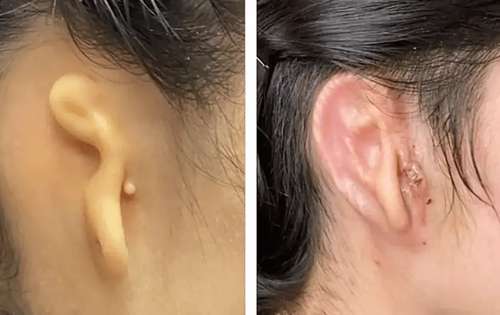A US-based regenerative medicine company, 3D bio Therapeutics has achieved the first 3D-ear implant developed from human cells. What makes this profound is its ability to seamlessly pull through despite this being the first clinical trial of 3D human cell grafts. With this new development, a future in artificial tissue implants and engineering looks attainable.
A Revolutionary Moment In Cosmetic Surgery
The 3D- Ear tissue grafts were developed to solve the medical condition known as Microtia. Microtia occurs when there's an absence or underdevelopment of one or both ears in the human body. Every year in the United States, over 1000 people are born with this defect and are left to spend the rest of their lives this way as there are few to minimal options for treatment.

With this innovation in cosmetic surgery, people born with this condition can now explore 3D-ear grafts as an effective solution. According to a publication made by the New York Times, Arturo Bonilla, a lead surgeon on the reconstruction procedure, admitted that this would have a huge impact on the procedure and how it is carried out going forward.
"If everything goes as planned, this will revolutionize the way this is done,” Arturo said.
The Future Is Here
3D-tissue implant and engineering are done by collecting samples from the existing tissue of the recipient. Ear-tissue grafts, in this case, would be from the ear tissue where cartilage cells are harvested. The cells are then reproduced in cultures and used as bio-ink for 3D printing into the shape of a new ear.
These 3D grafts have higher chances of surviving a lifetime because they are developed from human cells and can regenerate cartilage. 3D bio Therapeutics made a press release about the woman’s surgery, but technical details were left out due to proprietary concerns. The company assured that federal regulations and data had already been reviewed the clinical trial would eventually be published in a peer-reviewed medical journal. The trial is currently being replicated with 11 more patients and has a less likely occurrence of health complications or unsuccessful transplants.
With the company's intent to try other replacement body parts via 3D printing, it is safe to expect a future where even more complex organs like the kidney can be developed for transplant, thereby improving the quality of life.
